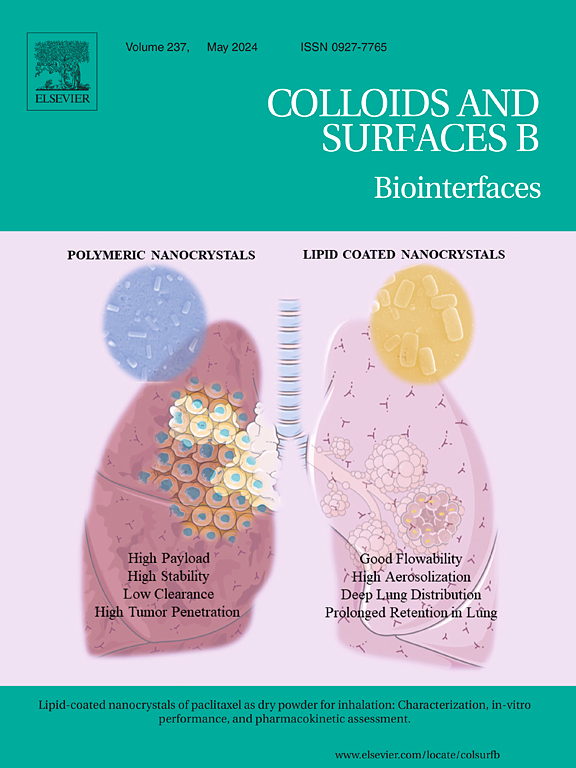Properties and potential uses of a biosurfactant extract obtained from corn steep water by a dialysis process
IF 5.4
2区 医学
Q1 BIOPHYSICS
引用次数: 0
Abstract
There is currently a significant demand for more sustainable and compatible ingredients and additives not only for cosmetic and pharmaceutical formulations but also for applications within the agrifood industry. This demand is emphasized by regulations like the COSMOS-standard, which classifies, for instance, cosmetic formulations based on ingredients that meet stringent criteria for their downstream processes promoting physical separation. In this research, a biosurfactant extract derived from a naturally fermented stream within the corn-wet milling industry was obtained for the first time through physical separation methods based on a dialysis process at lab scale. This was done as an alternative to the use of organic solvents. Subsequently, the extract underwent comprehensive characterization and assessment to ascertain its efficacy as a solubilizer, emulsifier, and spreading and wetting agent. The findings revealed that this biosurfactant extract is composed of glycopeptides and peptides, like the biosurfactant extract produced by lactic acid bacteria, but with lower critical micellar concentration (CMC). Moreover, the biosurfactant extract exhibited non-irritating properties (Mucosal Irritation Score < 0.07) and demonstrated interesting capabilities as a booster in the formulation of Pickering emulsions. Furthermore, it demonstrated a spreading capacity comparable to that of sodium dodecyl sulphate (SDS); but not a good solubilization of chicken broth cubes. However, its most noteworthy characteristic was its remarkable wettability capacity, which holds significant promise for applications in the cosmetic industry as a humectant agent, aligning with the standards set in COSMOS standard.
求助全文
约1分钟内获得全文
求助全文
来源期刊

Colloids and Surfaces B: Biointerfaces
生物-材料科学:生物材料
CiteScore
11.10
自引率
3.40%
发文量
730
审稿时长
42 days
期刊介绍:
Colloids and Surfaces B: Biointerfaces is an international journal devoted to fundamental and applied research on colloid and interfacial phenomena in relation to systems of biological origin, having particular relevance to the medical, pharmaceutical, biotechnological, food and cosmetic fields.
Submissions that: (1) deal solely with biological phenomena and do not describe the physico-chemical or colloid-chemical background and/or mechanism of the phenomena, and (2) deal solely with colloid/interfacial phenomena and do not have appropriate biological content or relevance, are outside the scope of the journal and will not be considered for publication.
The journal publishes regular research papers, reviews, short communications and invited perspective articles, called BioInterface Perspectives. The BioInterface Perspective provide researchers the opportunity to review their own work, as well as provide insight into the work of others that inspired and influenced the author. Regular articles should have a maximum total length of 6,000 words. In addition, a (combined) maximum of 8 normal-sized figures and/or tables is allowed (so for instance 3 tables and 5 figures). For multiple-panel figures each set of two panels equates to one figure. Short communications should not exceed half of the above. It is required to give on the article cover page a short statistical summary of the article listing the total number of words and tables/figures.
 求助内容:
求助内容: 应助结果提醒方式:
应助结果提醒方式:


